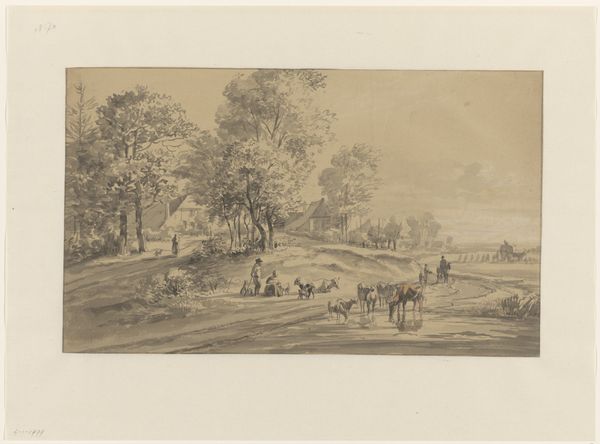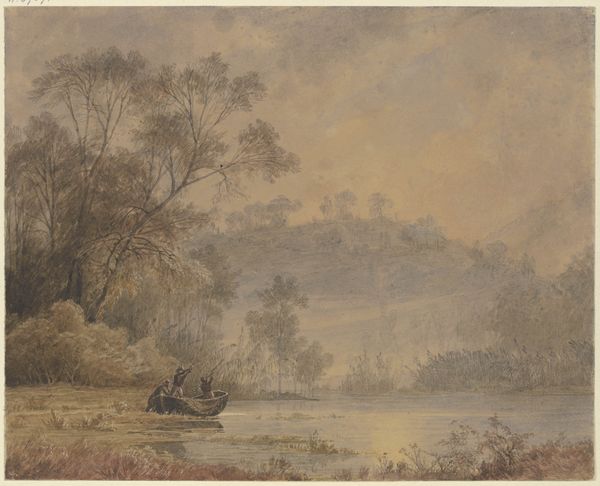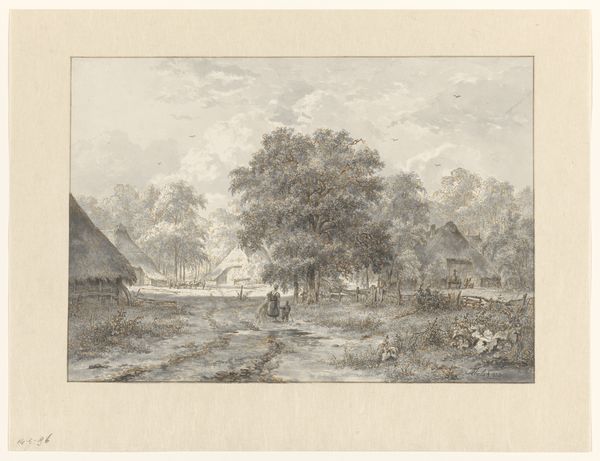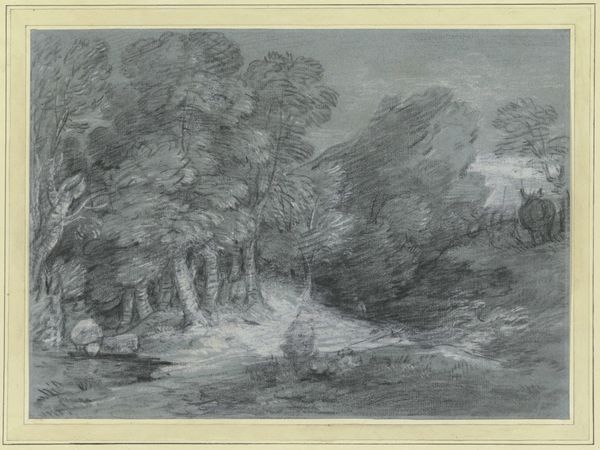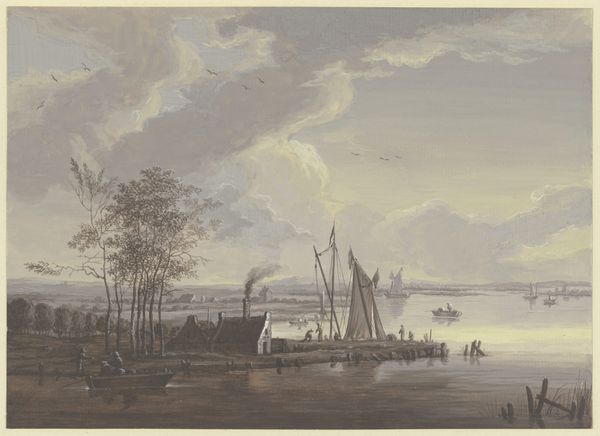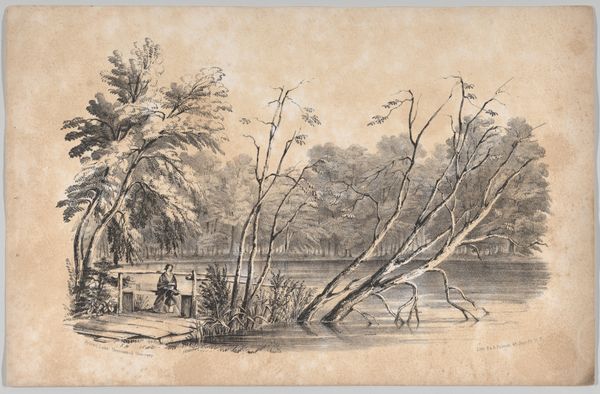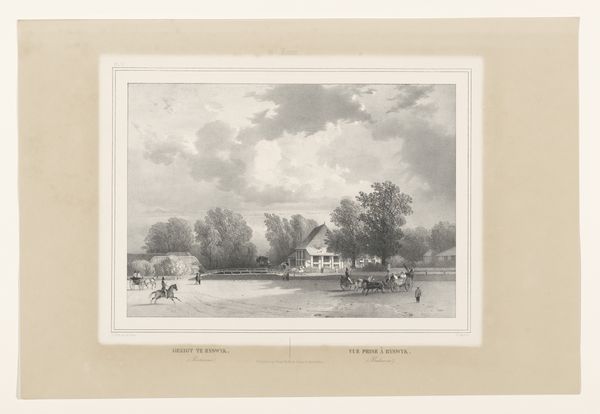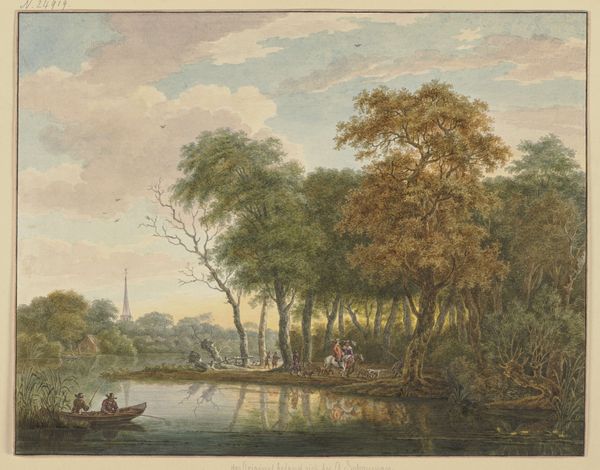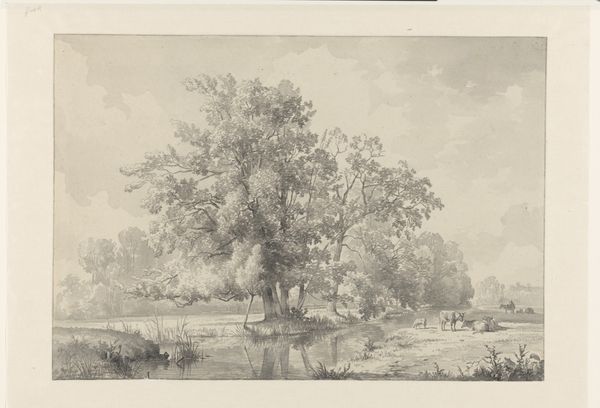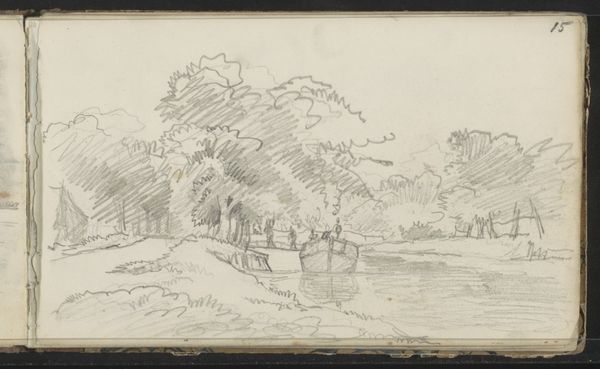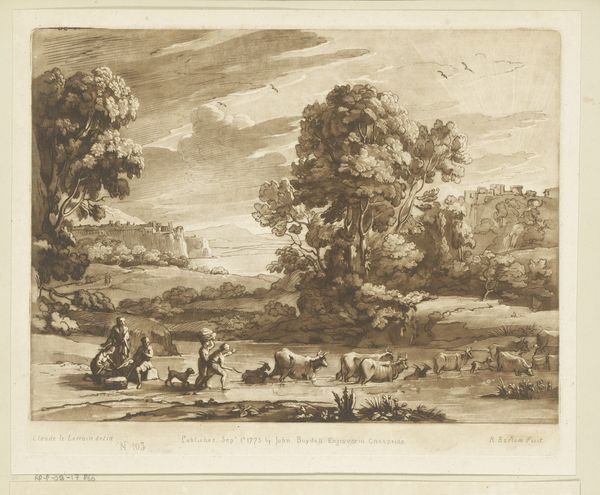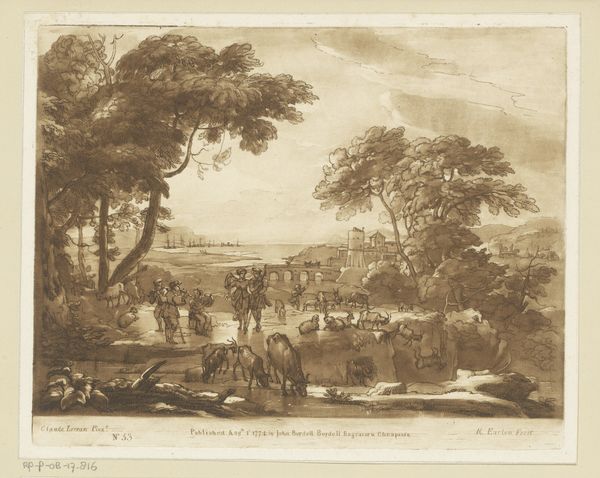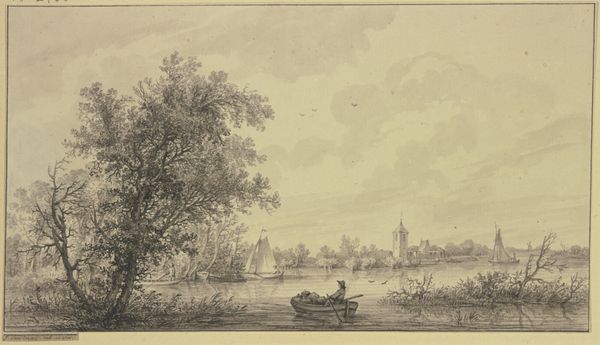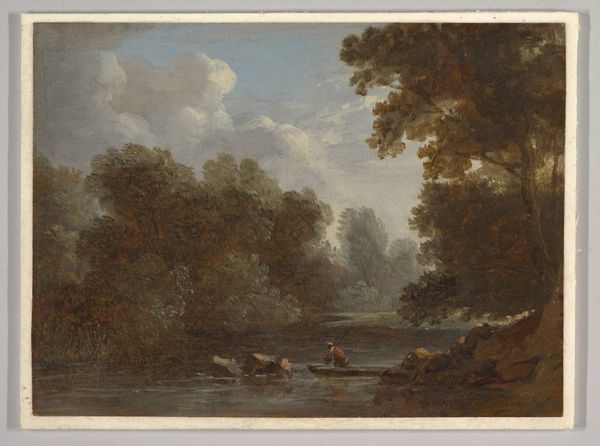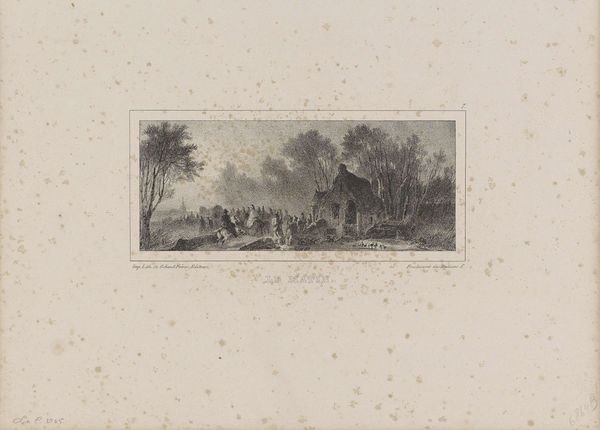
painting, gouache
#
water colours
#
painting
#
gouache
#
landscape
#
watercolour illustration
#
botanical art
#
watercolor
Dimensions: overall: 55.1 x 78 cm (21 11/16 x 30 11/16 in.)
Copyright: National Gallery of Art: CC0 1.0
Curator: "A Mayoruna Village," rendered in watercolor by George Catlin between 1854 and 1869. The muted tones immediately evoke a feeling of hazy distance. Editor: It certainly presents a panorama of life, though that pallid sky feels heavy, almost foreboding. It tempers the activity below, doesn't it? Curator: Absolutely. Note how Catlin uses a high vantage point. It flattens the space, emphasizing the surface and the intricate patterning of the figures against the landscape. Editor: The compression forces us to consider the indigenous inhabitants. Their placement feels… staged. As though being presented for anthropological consumption. Curator: Perhaps, but observe the composition: the diagonal thrust of the riverbank leads our eye toward the village, mirroring the arrangement of figures. The tonal consistency unites the foreground and background, minimizing depth. Editor: But what narrative does this unified field advance? The indigenous community is rendered as a picturesque backdrop, a romantic vision that obscures colonial power dynamics. How much interaction and perhaps conflict is elided? Curator: That reading certainly resonates. But even independent of those broader concerns, the watercolor medium contributes to this flattening, reducing details. Catlin clearly prioritizes breadth of depiction over nuanced depth of engagement. Editor: It raises important questions, though, doesn't it? About whose vision is privileged, who is othered. The aesthetic choices impact how we read the narrative—how the village functions symbolically, then and now. It prompts questions around representation and how historical power operates in these idyllic scenes. Curator: Indeed, a potent reminder that formalism can co-exist with historical questioning. Each aspect unveils fresh ways of looking at how color, line, and form are wielded as much as documenting or obscuring narratives of cultural interchange. Editor: A productive discord to conclude on—recognizing that our readings shape how history is seen, consumed, and hopefully questioned.
Comments
No comments
Be the first to comment and join the conversation on the ultimate creative platform.
